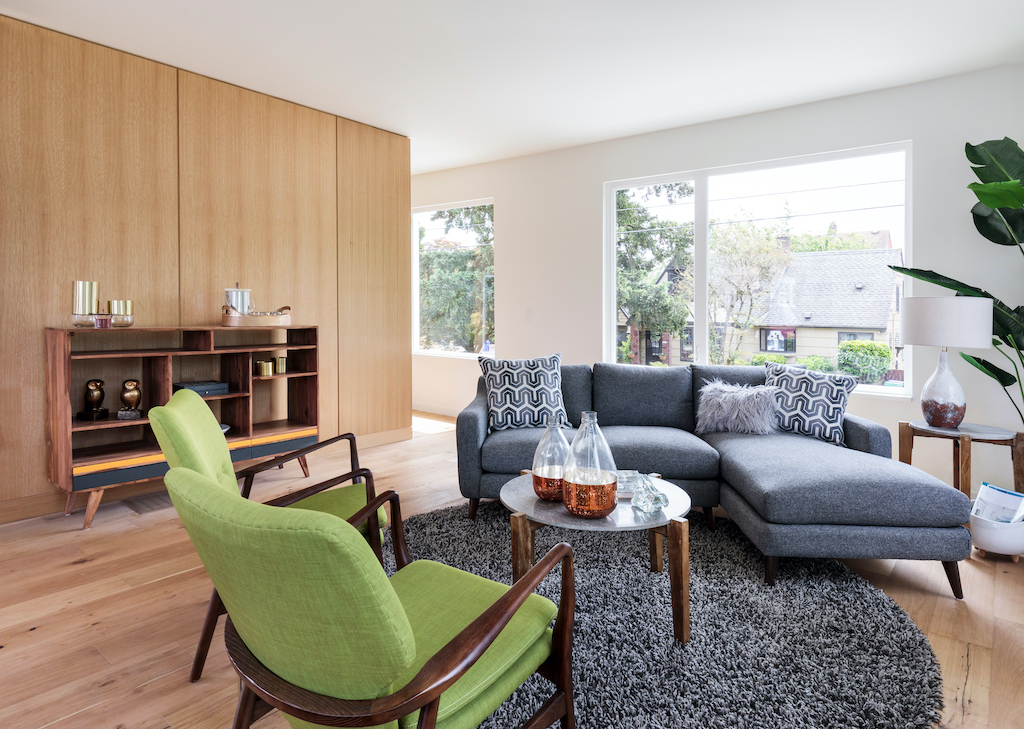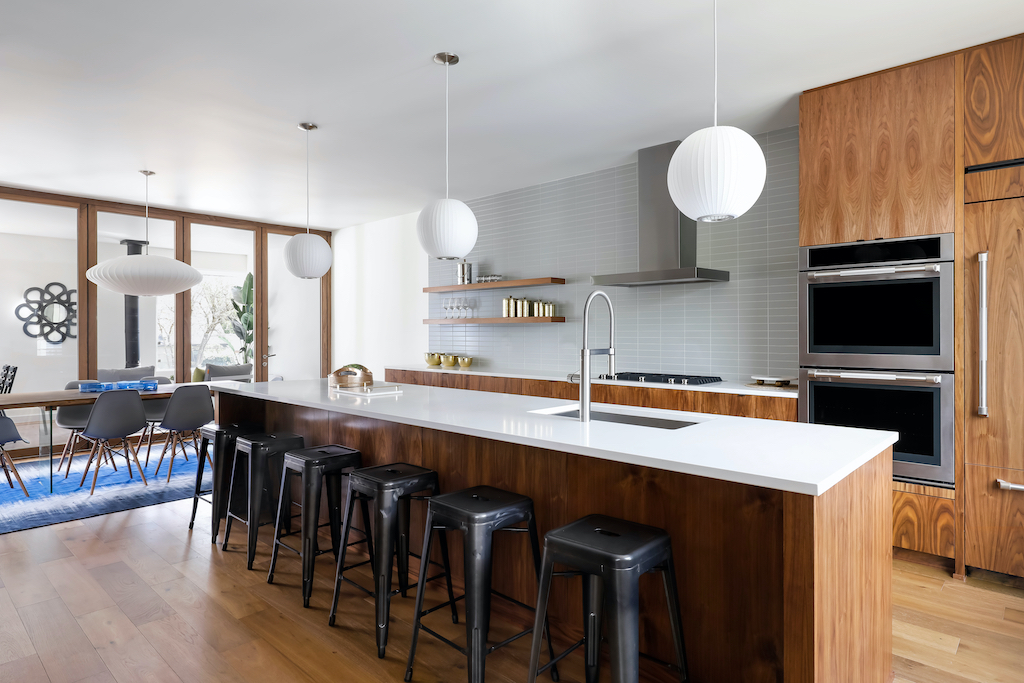Midcentury modern design is a style that emerged in the mid-20th century and continues to captivate design enthusiasts with its timeless appeal. Rooted in the post-World War II era, this design movement embraces simplicity, functionality, and a harmonious integration of form and function.
 Photo Credit: Shutterstock
Photo Credit: Shutterstock
Here are some defining traits to look out for to identify midcentury modern interior design:
Clean Lines and Organic Forms
Clean lines and organic forms are at the heart of midcentury modern design. Furniture and architectural elements showcase sleek, straight lines with gentle curves and a sense of balance. The aim is to create a visual harmony that reflects the beauty found in nature. Organic shapes, inspired by the natural world, are often incorporated into furniture and decor, adding a sense of fluidity and visual interest.
Emphasis on Functionality
Midcentury modern design places a strong emphasis on functionality and practicality. Each piece of furniture and every aspect of the design serves a purpose, with a focus on efficiency and usability. This commitment to functionality is evident in the innovative storage solutions, multi-purpose furniture, and thoughtful spatial planning commonly found in mid-century modern interiors. The design celebrates the idea that beautiful spaces can also be highly functional.

Use of Natural Materials
This is a design style that embraces the use of natural materials, particularly wood, to bring warmth and texture into the space. Woods like teak, walnut, and rosewood are commonly used for furniture and paneling, adding richness and depth. Other natural materials, such as stone, leather, and metals like brass and chrome, are also used to create a sense of balance and contrast. The combination of these materials adds a tactile and organic quality to mid-century modern interiors.
Bold Colors and Patterns
Midcentury modern design is known for its use of bold and vibrant colors. A palette of rich hues, including oranges, blues, yellows, and greens, is often employed to create visual impact and a sense of playfulness. These colors are often used as accents against a backdrop of neutral tones, such as white, beige, or gray, allowing them to pop and become focal points. Geometric patterns, such as chevron and herringbone, are also prevalent, adding visual interest and a touch of retro charm.

Iconic Furniture Design
Midcentury modern design is synonymous with iconic furniture designs that have become timeless classics. Pieces like the Eames Lounge Chair, Barcelona Chair, and Noguchi Coffee Table are just a few examples of the enduring influence of mid-century modern design on furniture. These designs combine comfort, elegance, and functionality, often utilizing innovative materials and manufacturing techniques.





